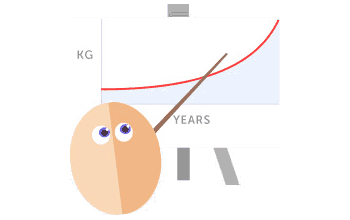http://www.ncbi.nlm.nih.gov/pubmed/23591120
http://journals.cambridge.org/action/di ... id=8879118
This is the science behind the "2 day diet" from the Breast Cancer researchers funded by Genesis UK (Manchester).
It's a complex trial, with three diets. The 2 day "intermittent carbohydrate and energy reduction" IECR is the closest to the 5:2 fast diet except that it uses two consecutive days and the carbohydrate content of the diet is limited to 40g on those two days. Protein tends to be fairly high, although the tables showing what was actually eaten are currently missing from the web.
The second Intermittent regime is ICER plus additional ad-lib proteins and unsaturated fat (IECR + PF). So the same carb restriction for two consecutive days but additional food on tap if desired.
The third arm of Daily Energy Restriction (DER) is a 25% restriction in calories every day - the same as IECR should provide by restricting to 600-650 cals for 2 days a week and eating to energy demand (TDEE) the other 5 days.
In practice the intermittent groups also restricted feed day calories....
Results are made slightly hard to interpret by the 3 kg differences in mean weight at baseline between the groups, with IECR the lightest group, IECR + PF 3kg heavier on average and DER a further 3 kg heavier. Probably not statistically significant, but makes reading tables difficult.
Anyway, results.....
http://journals.cambridge.org/action/di ... id=8879118
This is the science behind the "2 day diet" from the Breast Cancer researchers funded by Genesis UK (Manchester).
It's a complex trial, with three diets. The 2 day "intermittent carbohydrate and energy reduction" IECR is the closest to the 5:2 fast diet except that it uses two consecutive days and the carbohydrate content of the diet is limited to 40g on those two days. Protein tends to be fairly high, although the tables showing what was actually eaten are currently missing from the web.
The second Intermittent regime is ICER plus additional ad-lib proteins and unsaturated fat (IECR + PF). So the same carb restriction for two consecutive days but additional food on tap if desired.
The third arm of Daily Energy Restriction (DER) is a 25% restriction in calories every day - the same as IECR should provide by restricting to 600-650 cals for 2 days a week and eating to energy demand (TDEE) the other 5 days.
In practice the intermittent groups also restricted feed day calories....
Both IECR groups were instructed to have a euenergetic diet
during the 5 d periods between the restrictions but, instead,
had a ‘carry-over effect’ of the reduced intake of energy and
carbohydrate on these non-restricted days, which was signifi-
cantly lower than the diet that we prescribed. At 3 months, the
mean energy intake for a ‘non-restricted’ day of the IECR
group was 5716 (95 % CI 5215, 6216) kJ compared with their
prescribed diet of 8314 (95 % CI 8080, 8540) kJ, on average
32 % less than prescribed.
Results are made slightly hard to interpret by the 3 kg differences in mean weight at baseline between the groups, with IECR the lightest group, IECR + PF 3kg heavier on average and DER a further 3 kg heavier. Probably not statistically significant, but makes reading tables difficult.
Anyway, results.....
Changes in weight, adiposity and body circumferences.
The proportions of the three groups achieving 5 % or greater
weight loss at 3 months were 65 % (IECR), 58 % (IECR + PF)
and 40 % (DER) (P=0·076). Both IECR groups
experienced significantly greater and comparable reductions in body fat than the DER group (IECR P=0·007 and IECR + PF
P=0·019), but no significantly greater reductions in weight,
waist, hip and bust circumferences (Table 3). There were
small reductions in FFM in all the three groups. The median
percentage of weight lost, which was FFM, was less in the
IECR + PF group (20·4 (95 % CI 13·2, 27·2) %) compared
with both IECR (36·0 (95 % CI 26·4, 41·3) %, P=0·009) and
DER (29·3 (95 % CI 25, 38·1) %, P=0·048) groups.








